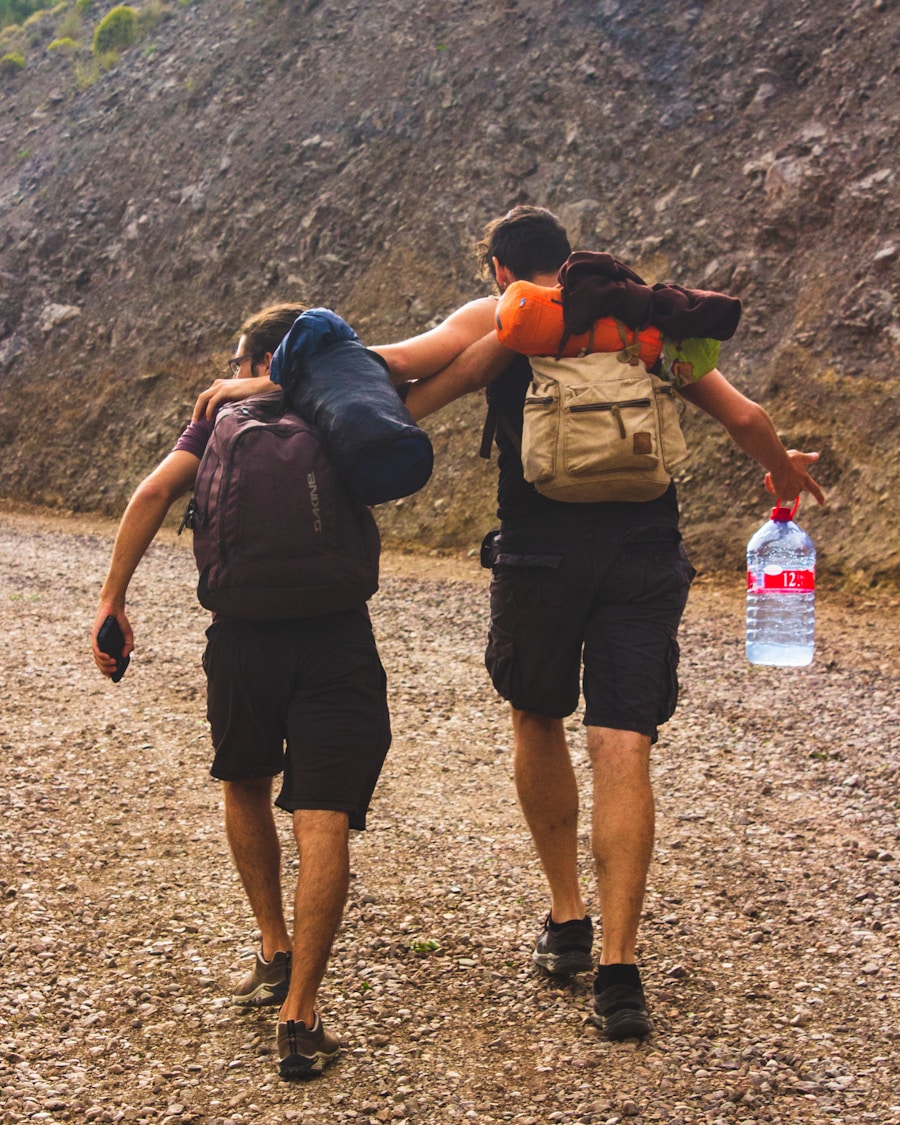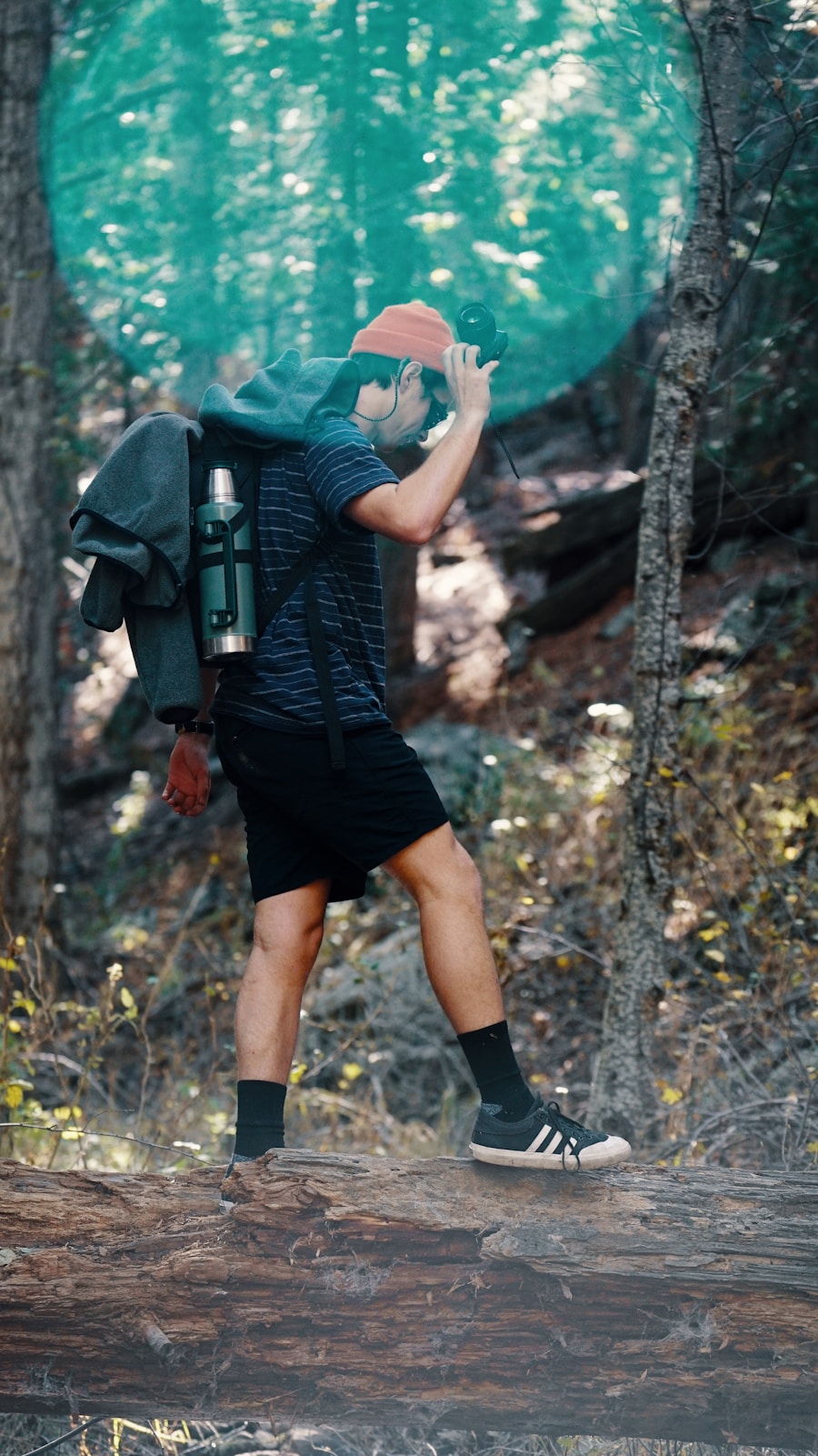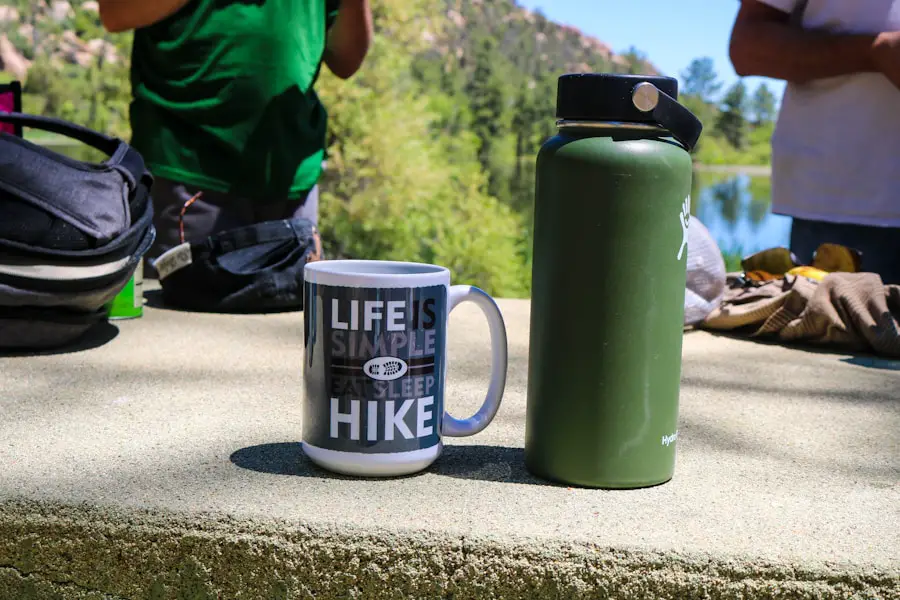Hydration is a critical component of outdoor activities, particularly hiking, where the body is subjected to physical exertion and environmental stressors. When hiking, the body loses water through sweat, respiration, and even urination. This loss can lead to dehydration, which can impair physical performance, cognitive function, and overall well-being.
Proper hydration helps maintain body temperature, lubricate joints, and transport nutrients, all of which are essential for sustaining energy levels and endurance during a hike. Moreover, staying hydrated can enhance mood and concentration, allowing hikers to enjoy their surroundings and navigate trails more effectively. The importance of hydration extends beyond just quenching thirst.
It plays a vital role in preventing heat-related illnesses, such as heat exhaustion and heat stroke, which can occur when the body overheats due to excessive exertion in hot conditions. Dehydration can also lead to muscle cramps, fatigue, and dizziness, which can be particularly dangerous in remote or rugged terrains. Therefore, understanding the significance of hydration is paramount for anyone embarking on a hiking adventure, as it directly influences both safety and enjoyment.
Key Takeaways
- Proper hydration is crucial for hiking as it helps maintain energy levels, regulate body temperature, and prevent muscle cramps and fatigue.
- Factors such as temperature, humidity, altitude, and individual sweat rates can affect water needs while hiking, making it important to adjust water intake accordingly.
- Recommended water intake for hiking is generally 0.5 to 1 liter per hour, but individual needs may vary based on factors like body size, exertion level, and environmental conditions.
- Signs of dehydration while hiking include dark urine, dizziness, fatigue, and dry mouth, while signs of overhydration include nausea, confusion, and headache.
- To stay hydrated while hiking, it’s important to drink water regularly, eat hydrating foods, and monitor urine color to gauge hydration levels.
Factors Affecting Water Needs While Hiking
Several factors influence an individual’s water needs while hiking, making it essential for hikers to assess their unique circumstances before hitting the trails. One of the most significant factors is the intensity and duration of the hike. A strenuous hike that involves steep ascents or challenging terrain will typically require more water than a leisurely stroll on flat ground.
Additionally, the duration of the hike plays a crucial role; longer hikes naturally lead to greater fluid loss and necessitate increased water intake. Environmental conditions also significantly impact hydration needs. Temperature is a primary consideration; hot weather can lead to increased sweating and fluid loss, while cold weather can cause dehydration through respiration and reduced thirst perception.
Humidity levels further complicate this equation; high humidity can hinder sweat evaporation, making it difficult for the body to cool down effectively. Altitude is another factor; as elevation increases, the air becomes thinner and drier, leading to increased respiratory water loss. Hikers should be mindful of these variables and adjust their hydration strategies accordingly.
Recommended Water Intake for Hiking

Determining the appropriate amount of water to consume while hiking can be challenging due to the various factors at play. A general guideline suggests that hikers should aim for about half a liter (17 ounces) of water per hour during moderate activity in moderate temperatures. However, this recommendation can vary widely based on individual needs and external conditions.
For instance, during strenuous hikes in hot weather, water intake may need to increase to one liter (34 ounces) or more per hour to compensate for higher fluid loss. It is also essential to consider personal factors such as body weight, fitness level, and acclimatization to the hiking environment. Heavier individuals or those who are less fit may require more water due to increased exertion levels.
Additionally, individuals who are acclimatized to high altitudes may have different hydration needs compared to those who are not. Therefore, it is advisable for hikers to listen to their bodies and adjust their water intake based on thirst cues and physical sensations.
Signs of Dehydration and Overhydration
| Signs of Dehydration | Signs of Overhydration |
|---|---|
| Thirst | Swelling in the hands, feet, or face |
| Dry mouth and tongue | Feeling bloated |
| Dark yellow urine | Nausea and vomiting |
| Dizziness or lightheadedness | Headache |
| Fatigue | Confusion |
Recognizing the signs of dehydration is crucial for hikers to ensure they maintain optimal hydration levels throughout their journey. Early symptoms of dehydration may include increased thirst, dry mouth, fatigue, and decreased urine output. As dehydration progresses, more severe symptoms can manifest, such as dizziness, confusion, rapid heartbeat, and muscle cramps.
In extreme cases, dehydration can lead to heat exhaustion or heat stroke, both of which require immediate medical attention. Conversely, overhydration—also known as hyponatremia—can also pose serious health risks. This condition occurs when an individual consumes excessive amounts of water, diluting the sodium levels in the bloodstream.
Symptoms of overhydration may include nausea, headache, confusion, and swelling in the extremities. In severe cases, it can lead to seizures or coma. Hikers must strike a balance between staying hydrated and avoiding excessive fluid intake by being aware of their body’s signals and adjusting their consumption accordingly.
Tips for Staying Hydrated While Hiking
To maintain proper hydration levels while hiking, several practical strategies can be employed. First and foremost, hikers should plan ahead by assessing the availability of water sources along their route. Carrying enough water for the entire hike is essential if natural sources are scarce or unreliable.
Additionally, hikers should consider using hydration packs or bottles that are easy to access while on the move, allowing for regular sips rather than waiting until they feel thirsty. Another effective strategy is to establish a hydration schedule. Setting reminders to drink water at regular intervals can help prevent dehydration before it becomes a problem.
Hikers should also be mindful of their fluid intake before starting their hike; drinking water in advance can help ensure that they begin their journey well-hydrated. Furthermore, incorporating electrolyte-rich beverages or snacks can aid in replenishing lost minerals during strenuous hikes or in hot conditions.
Hydration Gear for Hiking

Additional Storage and Efficient Design
Many hydration packs also come with additional storage compartments for snacks and gear, making them an efficient option for day hikes.
Water Bottles: A Lightweight and Durable Option
Hikers should opt for durable bottles that are easy to refill. Some hikers prefer collapsible bottles that take up minimal space when empty.
Safe Drinking Water with Portable Filters and Purification Tablets
Additionally, portable water filters or purification tablets can be invaluable for those hiking in areas with natural water sources; these tools allow hikers to safely drink from streams or lakes without the risk of waterborne illnesses.
Hydration Strategies for Different Types of Hikes
Different types of hikes may require tailored hydration strategies based on their unique demands and environments. For short day hikes on well-marked trails with ample water sources nearby, hikers may find it sufficient to carry a small water bottle or hydration pack with enough fluid for the duration of their trek. In contrast, longer multi-day hikes or backcountry excursions necessitate more careful planning regarding water supply and storage.
For challenging hikes in hot climates or at high altitudes, hikers should adopt a proactive approach by increasing their water intake before starting the hike and regularly sipping throughout the journey. In these conditions, it may also be beneficial to consume electrolyte-rich drinks or snacks that help replenish lost minerals due to sweating. Conversely, during cooler hikes where sweat loss is less pronounced, hikers may not need as much fluid but should still remain vigilant about hydration levels.
Importance of Rehydrating After Hiking
Rehydrating after a hike is just as important as maintaining hydration during the activity itself. After exertion, the body needs to replenish lost fluids to aid recovery and restore balance. Drinking water or electrolyte-rich beverages post-hike helps facilitate muscle recovery by transporting nutrients and removing waste products from the body.
This process is crucial for reducing soreness and fatigue that often accompany physical activity. Moreover, rehydration plays a vital role in restoring cognitive function and mood after a hike. Dehydration can lead to feelings of lethargy or irritability; therefore, consuming fluids post-hike can help improve overall well-being and mental clarity as one transitions back into daily life.
Hikers should aim to drink at least 1-2 cups of water within 30 minutes after completing their hike and continue hydrating throughout the day to ensure optimal recovery and readiness for future adventures.
When planning a hiking trip, it is crucial to consider how much water to bring along to stay hydrated. According to a recent article on TakeTravelInfo, it is recommended to bring at least 2 liters of water per person for a day hike. This ensures that you have enough water to stay hydrated throughout your journey and prevent dehydration. Additionally, having a reliable water filtration system, as mentioned in the article on the best travel razor, can also be beneficial in case you need to refill your water supply from natural sources along the trail.
Love travel? Join Our Facebook Community For More Tips.
FAQs
How much water should I take hiking?
It is recommended to take at least 0.5 to 1 liter of water per hour of hiking, depending on the intensity of the hike and the weather conditions.
What factors should I consider when determining how much water to take hiking?
Factors to consider include the length and intensity of the hike, the weather conditions, the availability of water sources along the trail, and individual hydration needs.
What are the risks of not taking enough water while hiking?
Not taking enough water while hiking can lead to dehydration, which can cause fatigue, dizziness, headaches, and in severe cases, heat stroke.
How can I ensure I stay properly hydrated while hiking?
To ensure proper hydration while hiking, drink water regularly throughout the hike, even if you do not feel thirsty. It is also important to start the hike well-hydrated and to replenish fluids after the hike.
Are there any tips for conserving water while hiking?
Some tips for conserving water while hiking include wearing moisture-wicking clothing, hiking during cooler parts of the day, and rationing water if necessary. It is also important to be mindful of water sources along the trail and to treat or filter water from natural sources before drinking.
